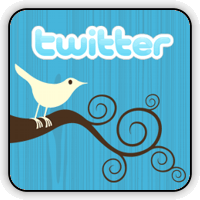What You Will Need:
- An Amazon Kindle
- Microsoft Word 2007
- Calibre. It is a free program.
Typically, I have been finding the writings of the Puritans (or other old dead guys who rock) in several different formats. If you go somewhere like Google Books, you will be sorely disappointed with the text, because most of them are not convertable to your Kindle in any readable format, since they tend to scan first editions of books that look horrible. Someone down the road could convert those books using a program like ABBYY Fine Reader, but it would be very tedious work.
Another place you might be tempted to find books to put on your Kindle might be the Christian Classics Ethereal Library. Unfortunately I've stopped looking for books there because of the fact that a fifty-chapter book there gets broken down one page at a time and you end up having to highlight and copy and paste way too much. They even create individual pages for chapter headings, which is insane. However, after I explain how I make my books, someone out there may be willing to put the work into messing with CCEL. I don't mean to knock CCEL, but the way they format their books is designed to keep you glued to their site.
Here are the places where I've found the most helpfully formatted texts to work with:
- The Jonathan Edwards Center at Yale (Not the easiest site to do this conversion with, but the content is second to none, and it's totally worth it to have Edwards on your Kindle!)
- Puritan Library.com (Probably the BEST site I've found to get lots of Puritans on. My only warning is that they have a lot of supposed "Kindle" files that are actually unreadable because they were scanned and then quick-converted for Kindle, and there was no proofreading done. If you want a clean book that doesn't have formatting problems, then I would stay away from the "Kindle" files and the "EPUB" files that they have up there.)
- Monergism (They have amazing content. Most of it is formatted in traditional internet-style HTML, which is ideal for what I'm about to demonstrate for you all.)
- This list could go way longer.
Putting Pre-formatted HTML Text on Your Kindle:
Maybe down the road I'll deal with the more complex formats like PDF and EPUB, but for now I'm going to explain how to do the simplest conversion that you'll run into the most.
What you want to look for is a web page that, when you click on it, displays the extension ".htm" or ".html" at the top in your browser bar. For today's example, I found John Owen's A Display of Arminianism at Monergism, so we'll use that page as our working example. Now, the first thing to notice is that yes, it's going to be annoying copying the chapters one at a time. Deal with it. No pain, no gain. Many books out there such as Richard Sibbes' wonderful book The Bruised Reed are absolutely perfect and put all of the text on one page. But this is the exception. Most stuff you will find is broken down chapter by chapter.
Step One:
Open Microsoft Word and start a new document (make sure your version of Word allows you to save in HTML format. This is important if you want your e-Book to look nice and not be formatted all screwy.)
Step Two:
Copy the text of the Title and Table of Contents first into Word. Then go back to the web page and open chapter one and do the same thing. Copy and paste the entire content of the book into Microsoft Word until you've got all the pages of the book now resting comfortably and in order in your Word document.
Step Three:
Format the book to your satisfaction. The formatting decisions you make (such as font size and italics) will translate over once we do this conversion. I try to format all the text to 12 pt. font. You can also get very elaborate if you want. For example, if you want to create a Table of Contents that you can actually jump throughout the book from chapter to chapter, then you will have to use Word to create bookmarks within the body of the book, and then create hyperlinks within the Table of Contents linking it with the bookmarks you've place throughout the book. It's a lot of work, I won't lie, but I'm getting pretty fast at it, now. One specific formatting decision that I always make, aside from linking within the Table of Contents, is that I always insert "Page Breaks" within the book at the end of each chapter of the book, because then each chapter always starts on a fresh, new page. It's the little things like this that make reading old dead guys on your e-Reader a much more palatable proposition.
Step 3.5: I should add that if you don't have Word, you aren't completely out of luck. You can just save the book as a TXT file using something like Wordpad, or some simple text editor. The only downside is, you get no formatting, no hyperlinks, no nothing. But if you do the simple TXT file, you can just copy it straight into your Kindle's Documents folder and start reading without even needing to convert it into an e-Book format.
Step Four:
After you have finished formatting the text to your satisfaction, to to "File" "Save As" and from the drop down menu where you can select the format to save your Word Document in, save the file, first, as a regular Word Doc so that you will be able to, down the road, fix errors, or fix formatting that you might have missed, down the road. After this, save the file as "Web Page (HTM, HTML)" file. This format best preserves the formatting, and works flawlessly when it gets run through Calibre, which we're about to do.
Step Five:
Open Calibre. Calibre is a free e-book software that is very good for converting files between different e-reader formats. It's my program of choice for converting EPUB files to Kindle's format, as well, and the steps are almost identical to what we're about to do, except you're doing it with EPUB files instead of HTML files.
Step Six:
Copy the HTML file you've just created into Calibre. Just drag and drop the file into the main window. After that, in Calibre, right click on the file you're dealing with and select "Edit Meta Information" and then "Edit Meta Information Individually." Here is where you get the book's title and author information exactly right. I highly recommend putting the author's name last name first, because then your Kindle will keep your author list in order, which is pretty nice. I'm sort of a picky stickler for this kind of stuff, though, and I do have a lot of books to keep organized, so if you don't care about these small details, then just skip this step. But it's not a very good idea...
Step Seven:
Right click on your file in Calibre and choose "Open Containing Folder." When Calibre converts your file, it will show up here as a ".mobi" file.
Step Eight:
Right click on the file in Calibre and choose "Convert e-Books" and then "Convert Individually." When the menu comes up, the most important thing is to make sure that the "Output Format" has MOBI selected. Once you're happy with what you see on this page, click OK. It may take a few minutes depending on your computer and the size of the book you are converting, but when it's all done you'll have a nice baby e-book formatted to a Kindle-ready format.
Step Nine:
Plug in your Kindle, open the Kindle's directory and find the folder called "Documents." Copy your new e-book into that folder, and when you unplug your Kindle, you will now be able to review your e-book, making sure you're happy with the way you formatted it.
Step Ten:
Glorify God for giving the internet and the Kindle to his church for her joy and worship of God. Glorify Him that we Reformed Christians can live in a day and age where we can freely share with one another the fruits of the labors of all the church for the last two thousand years.



Great information, Adam. Thanks for taking the time to learn how to do this and then for sharing it with us.
ReplyDeleteI am using a kindle reader app on my ipad. Will these steps still work and how would I load the book to the app?
ReplyDeleteGrace and Peace,
John
John, from what I know about the Kindle reader app, I think that there's a strong chance of it. The reader app should be not only for Amazon's .azm files, but the app should read ANY files that the Kindle reads. It's certainly worth trying out with some document or book that is short and isn't too much work.
ReplyDeleteIf you would, let us know for sure, once you try it out.
What if I am doing everything that you are saying to do but it is failing to convert the ebook?
ReplyDeleteWhich step is it failing at? Is it at the step where you use Calibre to do the final conversion?
ReplyDelete